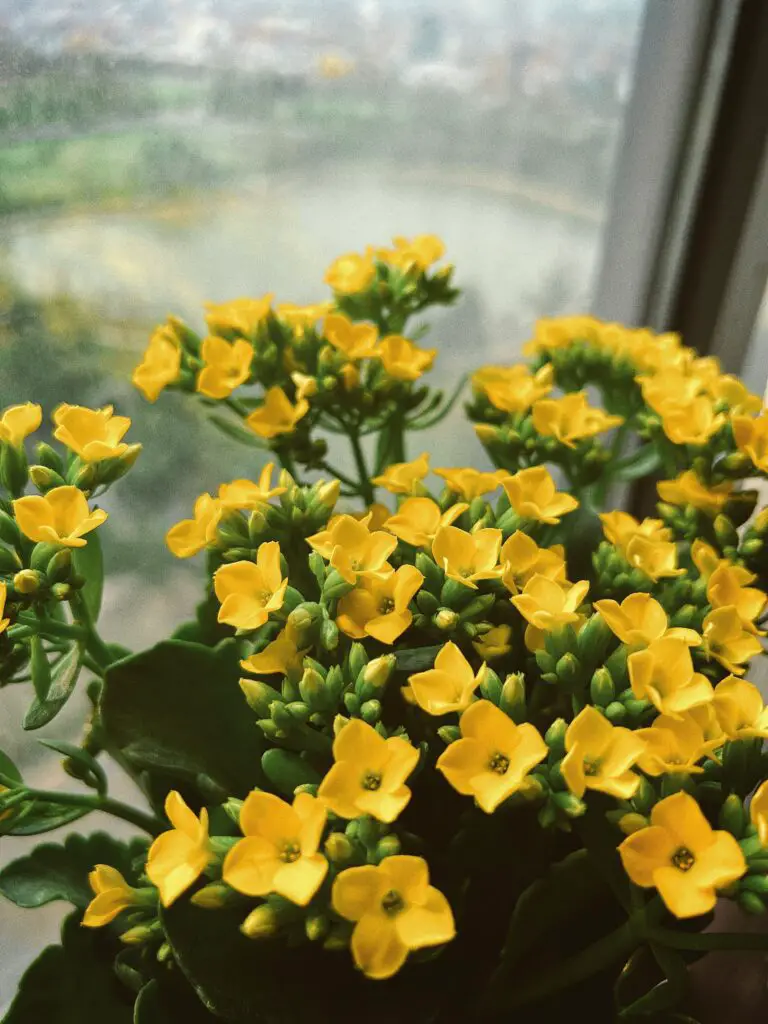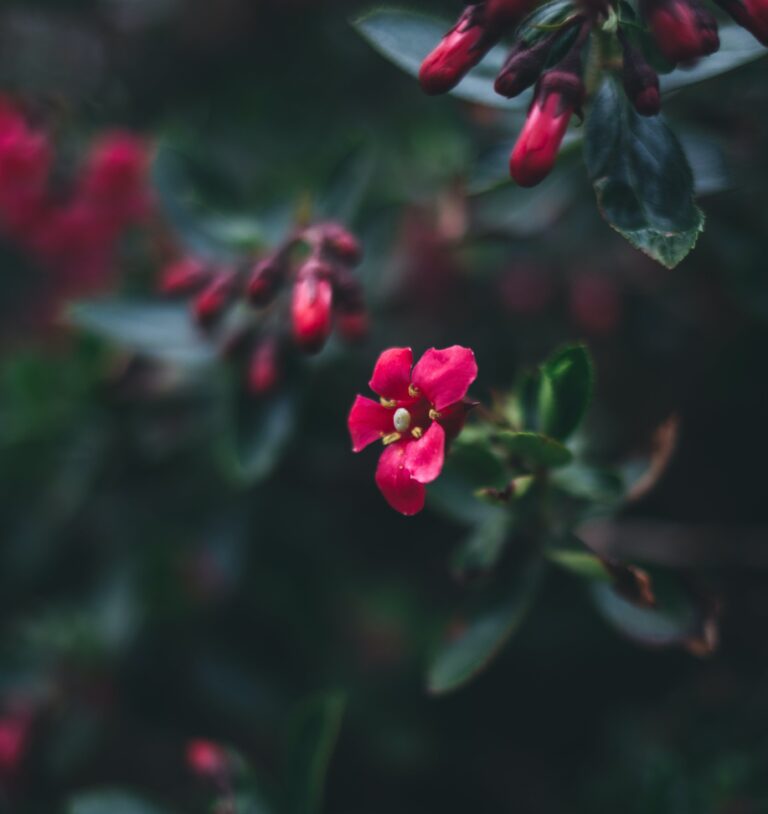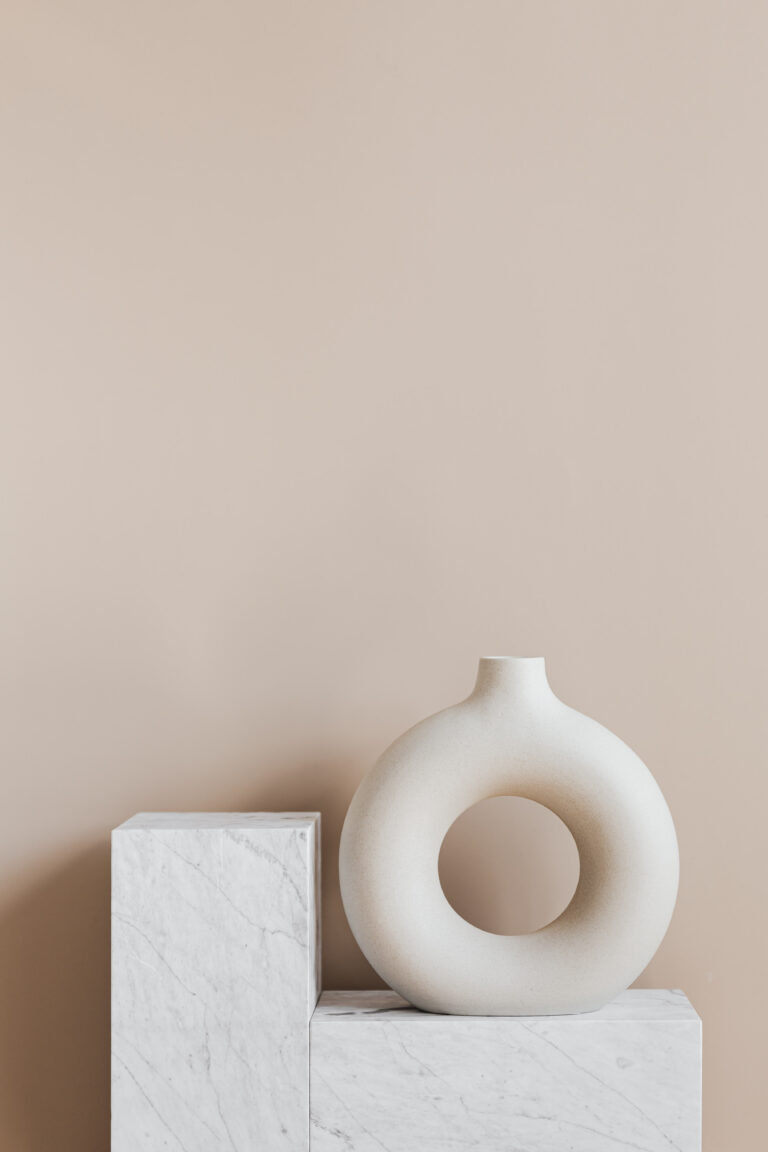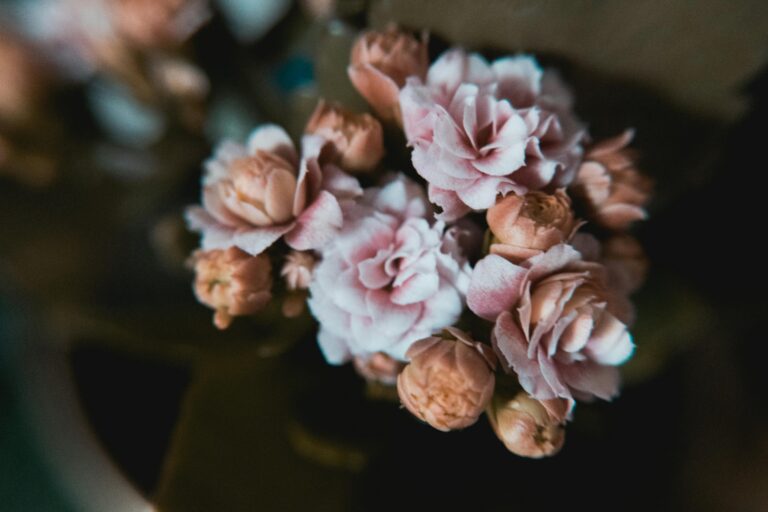Introduction to Kalanchoe Thyrsiflora
Welcome to the lush world of Kalanchoe thyrsiflora, a robust succulent that adds a touch of vibrancy to any setting. Also known as the paddle plant, this succulent is part of the Crassulaceae family, known for its remarkable resilience and stunning foliage.
Imagine a plant that demands very little yet gives back so much. The Kalanchoe thyrsiflora, with its broad, paddle-like leaves, flourishes with the simplest of care routines. It is a versatile botanical companion that adjusts to the cozy confines of indoor living as gracefully as it embraces the expansive freedom of an outdoor garden.
Whether basking in the full glory of the sun or nestled in partial shade, this easy-going plant maintains its composure, making it a favorite among novice and expert gardeners alike. It’s the kind of plant that thrives on neglect, asking only for a drink when its soil feels parched and a spot where it can soak up the ambient light.

For a detailed exploration of nurturing these resplendent plants, the Paddle Plant Care Guide is an excellent source. It dives into the specifics, ensuring your Kalanchoe thyrsiflora continues to thrive and delight.
Incorporating the Kalanchoe thyrsiflora into your plant collection is more than just adding greenery; it’s about embracing a living sculpture. Its leaves, often dressed in a blend of green and red, resemble an artist’s palette, with each leaf a masterstroke of color and form.
The paddle plant stands as a testament to nature’s simplicity and the joy of gardening. With this succulent in your life, you can expect an unassuming companion that offers a spectacle of color and vitality with the slightest of gestures.
Discover more about the fascinating world of succulents and their care at Prickly Petals, where every plant tells its own unique story.
Appearance and Distinct Traits
Step into the succulent spotlight and behold the radiant Kalanchoe thyrsiflora, a plant whose beauty lies in its simplicity and ever-changing palette. If you’re a plant enthusiast or simply someone who appreciates the small wonders of nature, you’ll be captivated by the waxy, paddle-like leaves that fan out gracefully from its sturdy stem. These leaves are the plant’s pièce de résistance, starting off a soothing shade of blue-green and maturing into a kaleidoscope of pinks, yellows, and even fiery reds as the seasons turn.

Imagine an artist deftly brushing strokes of color across the leaves, each one becoming a natural canvas showcasing the plant’s response to the kissing sun. The edges of the leaves seem to capture sunsets, with rich reds and deep pinks materializing as if by magic in response to cool nights and sunny days. It’s a live performance in your garden or living room, with the Kalanchoe thyrsiflora needing nothing more than a front-row seat by a bright window to put on its splendid show.
What’s truly fascinating is how this succulent stores water within those broad, flat leaves, making it a paragon of drought tolerance—a survivalist in the plant kingdom. You can marvel at this example of nature’s ingenuity and perhaps be inspired to embrace resilience in your own life, knowing that something so beautiful can thrive even in the harshest conditions. For more insight on nurturing this vibrant succulent, a guiding article offers tips and care instructions to help your Kalanchoe thyrsiflora flourish.
The seasonal shift in color isn’t just for show — it’s a testament to the plant’s adaptability and a signal of the coming blooms. As gardeners, we get to partake in this visual symphony, the flush of hues a prelude to the candle-like clusters of blossoms that make their grand entrance in spring. It’s a natural reminder of how our environments shape us, just as they shape the Kalanchoe thyrsiflora. So, let’s take a leaf out of this succulent’s book and adapt with elegance, color our own lives with the vibrance we so admire, and always remember that, like this plant, there is more to us than meets the eye.
The Impact of Seasonal Color Changes
Not only is the Kalanchoe thyrsiflora an enchanting sight to behold, but it also serves as a living barometer for the seasonal shifts in its environment. Its leaves are like mood rings, subtly signaling the changes in weather and climate. This remarkable ability is not only a wonder for botanists and horticulturalists but also a delightful surprise for the everyday observer who gets to see the transformation unfold right before their eyes. With each passing season, the Kalanchoe thyrsiflora reminds us of the continuous cycle of life and the beauty of change.
Optimal Growing Conditions
Picture this: a robust Kalanchoe thyrsiflora, vibrant and cheerful, soaking up the perfect blend of sun, warmth, and earthy goodness. The key to unlocking the verdant splendor of this succulent lies in simulating its native habitat’s conditions right in your home or garden.

The Kalanchoe thyrsiflora, a real sun seeker, thrives best with abundant daylight. Opt for a sunny windowsill where it can bask in the morning light and receive partial shade in the afternoon’s intensity. Imagine the plump leaves blushing at the edges, a sun-kissed sign of a happy plant.
When it comes to the ideal temperature range, think mild and mellow. Ensure your leafy friend stays snug as a bug within 60°F to 85°F (15°C to 29°C). Of course, they can withstand a chill down to 50°F (10°C), but it’s best to shield them from winter’s frosty bite, which can make their bright leaves wilt.
Soil for the Kalanchoe thyrsiflora? It’s all about the perfect mix: a well-draining concoction that holds just enough moisture to keep the roots hydrated but never soggy. You might want to explore our guide to succulent soil to create the ideal foundation for robust growth.
By simulating these growing conditions, your Kalanchoe thyrsiflora won’t just survive; it will thrive, painting your space with its bold forms and colors. Isn’t it fascinating how a little attention to detail can turn a simple plant into a testament to nature’s resilience and beauty?
Watering and Feeding
Treating your Kalanchoe thyrsiflora to just the right amount of water is akin to mastering an art form. Watering these vibrant succulents can be a delicate balancing act – not too much, not to little. Imagine you’re a barista trying to create the perfect foam for a cappuccino; that’s the level of precision your Kalanchoe thirsts for.
To decode this conundrum, let’s delve into the succulent’s watering needs. Picture a desert downpour, rare yet robust, followed by a period of drought. Mimic this in your home by allowing the soil to completely dry out between waterings. It’s a simple but effective way to avoid the dreaded overwatering trap, which can lead to root rot faster than a summer rain evaporates on hot pavement.
But what about nourishment? These succulents crave a fertilizer that’s as much a superhero as they are, specially formulated for succulents and cacti, brimming with the right blend of nutrients. Apply a diluted solution to your Kalanchoe, and you’ll witness what can only be described as botanical euphoria. Picture tiny fireworks of growth, as bright and as captivating as the plant itself, but all happening at a snail’s pace. This isn’t a sprint; it’s a leisurely stroll in the garden of thriving growth.
Remember, frequency is key – a quarterly feeding during the growing season should suffice, like a quarterly earnings report for investors, giving a performance boost at just the right intervals. And as winter whispers in, ease up on both water and food, letting your Kalanchoe nestle into a semi-dormant state, cozy and undisturbed, dreaming of longer days and sunnier skies.
For an enlightening visual guide on caring for Kalanchoe thyrsiflora, don’t miss this informative video that beautifully showcases the best practices in action.
Incidentally, should you find yourself enchanted by the diverse realm of succulents, take a journey through our comprehensive guide, exploring the myriad species that share the marvelous adaptability of your Kalanchoe thyrsiflora.
Watering and Feeding
Quenching the thirst of your Kalanchoe thyrsiflora isn’t just about routine, it’s about timing and technique. Imagine you’re trying to perfect your grandmother’s secret cake recipe—precision matters. Your flapjack plant craves a drink only when its soil is completely parched, reminiscent of a drought-stricken landscape awaiting a downpour. Treat it to a generous gulp, but be cautious as overwatering can suffocate its roots faster than a cork traps bubbles in a fine champagne!
Now, envision yourself as a maestro conducting an orchestra, where feeding is a seasonal symphony. During the crescendo of growth in spring and summer, pamper your Kalanchoe with a succulent-centric fertilizer, diluted to half-strength. This nutrient cocktail, rich in phosphorus, will empower the succulent to flourish with the zeal of a sprinter charging towards the finish line—but remember, your plant prefers a marathon’s pace.
As autumn’s amber leaves begin to fall, think of your succulent settling in for a long winter’s nap. Just like campers hibernating in their tents, your Kalanchoe slows down. This is the moment to scale back on the watering can and hold off on the feed, giving it a rest to rejuvenate and prepare for the next season’s grand performance.
For those who’ve already fallen under the enchanting spell of these succulents and crave more insights, continue your journey with our Ultimate Guide to Succulent Care, a treasure trove of tips and tricks tailored to the unique needs of succulent enthusiasts.
Propagating Kalanchoe Thyrsiflora
Imagine multiplying the joy your vibrant Kalanchoe thyrsiflora brings by propagating its own clones! This easy-going succulent is not just beautiful to gaze upon, with its paddle-shaped leaves and striking rosette form, but it’s also a generous plant when it comes to propagation. Let’s delve into the gratifying world of turning one plant into many!
Getting Started with Leaf Cuttings
One of the most magical aspects of the Kalanchoe thyrsiflora is its ability to sprout new life from a single leaf. Begin by selecting a healthy, full-grown leaf from your plant. Gently twist the leaf from the stem, ensuring a clean break. Now, resist the temptation to immediately plant this leaf. Instead, allow it to callous over for a few days in a warm, dry place. This crucial step prevents rot and heralds the start of a new plant’s journey. Once calloused, place the leaf on well-draining soil and mist it lightly. In a few weeks, tiny roots and a miniature plant will emerge like a phoenix from the ashes – a true spectacle of nature.
The Wonder of Offsets
Sometimes, the plant takes matters into its own robust hands. You may notice small offsets, or pups, forming at the base of your Kalanchoe thyrsiflora. These eager little starters are nature’s gift to the patient gardener. When they’ve grown a bit and have their own roots, it’s time to gently separate them from the mother plant, ensuring each offset has its own root system intact. Transplant them into their own containers with succulent-friendly soil and watch them flourish independently, ready to become the centerpieces of their own stories.
What’s more, a real-life example is always helpful. Imagine visiting your friend, an avid succulent enthusiast, to find their windowsill boasting a neat line of flourishing Kalanchoe thyrsiflora plants, each one birthed from the initial plant that you might remember sitting there, years ago. It’s a triumph of propagation, each plant with its own narrative, thanks to the simple methods of leaf cuttings and nurturing offsets.
Propagation is more than just a gardening task; it’s a way to connect with nature, understand patience, and appreciate the slow yet rewarding process of growth. Whether it’s the reassuring wait for the emergence of new roots from a leaf cutting or the excitement of discovering a new offset, the art of propagating Kalanchoe thyrsiflora is a fulfilling journey that beautifies your living space and life alike.
Here’s a visual guide from a fellow succulent lover that takes you through the steps of planting a Kalanchoe paddle plant cutting:
Embark on the adventure of propagation, and soon you’ll have an enviable collection of Kalanchoe thyrsiflora, each with origins tracing back to the first proud parent. Embrace the rewarding experience of watching your succulent family grow and spread the splendor of these remarkable plants.
Common Pests and Diseases
When it comes to the upkeep of the lovely Kalanchoe thyrsiflora, it’s not just about the sunlight and watering. Oh no, these vibrant succulents are sometimes the party venue for unsolicited guests – pests and diseases! But don’t worry, I’ve got the scoop on how to keep your plant looking as stunning as a botanical garden showstopper.
Have you ever noticed your Kalanchoe thyrsiflora looking a bit under the weather? Maybe it’s not standing as tall, or its leaves lack that usual zesty color. Chances are, it’s playing host to some pesky critters! Aphids, mealybugs, and spider mites – the usual suspects – just love to crash the party. These tiny troublemakers can be sneakier than a cat burglar, so keep your eyes peeled!

But it’s not just the creepy crawlies we need to fight off. Fungal foes like powdery mildew can swoop in unannounced, leaving your plant looking like it’s been dusted with flour. And just when you think you’ve got it all sorted, bacterial rot can come knocking, turning stems into mushy messes.
Now for the good news – you can show these invaders the door! Organic options like neem oil can send pests packing with their tails between their legs. And if things get a little more serious, chemical treatments are your knights in shining armor, ready to reclaim your plant’s health. Just remember to read those labels and use as a last resort; after all, we’re working on that green thumb reputation!
Remember, a little attention goes a long way. Regular check-ups, a keen eye for changes, and prompt treatment are like the plant-parent trifecta for a happy Kalanchoe thyrsiflora. Keep up the good work, and soon enough, you’ll be the talk of the town – or at least the envy of the neighborhood plant club!
Design and Decor with Kalanchoe Thyrsiflora
Envision a home infused with the vibrant, sculptural beauty of Kalanchoe thyrsiflora, where its fleshy leaves and warm hues bring a dash of desert charm into your living space. This hardy succulent, with its paddle-shaped leaves that blush with tones of yellow, orange, and pink, isn’t merely a plant – it’s a statement piece, a natural work of art that draws the eye and sparks conversation.

Imagine a sunny windowsill where a group of Kalanchoe thyrsiflora basks in the golden morning light. Their presence transforms the simplest of shelves into an elegant display, a testament to nature’s unmatched design. To emphasize their striking appearance, pair them with containers that echo their rustic appeal, such as terracotta pots or minimalist stone planters that complement their vibrant foliage.
Pairing With Complementary Plants
When it comes to creating a visual symphony, consider the diverse succulent family—each member brings its unique texture and form to the ensemble. Place your Kalanchoe thyrsiflora alongside a trailing string of pearls or blue-tinged echeveria. Their contrasting shapes and colors will accentuate the architectural beauty of each plant, crafting a living tapestry that’s ever-evolving and striking.
Container Gardening Tips
For urban dwellers with limited space, container gardening is a creative avenue to introduce Kalanchoe thyrsiflora into your abode. Opt for shallow, well-draining pots that allow their roots to spread comfortably without waterlogging. A gritty, succulent-specific soil mix will provide the ideal environment for these drought-resistant wonders, ensuring they flourish even in the coziest of balconies or patios.
Stylish Arrangements
Don’t shy away from using Kalanchoe thyrsiflora as a centerpiece for your dining room table or as a vibrant addition to your home office. Pair them with sleek, modern furniture or warm, wooden textures to create a space that’s both contemporary and inviting. These succulents are more than just plants; they’re an accent, enhancing your home’s ambiance with their living splendor.
Overall, Kalanchoe thyrsiflora presents countless possibilities to elevate your interior design and outdoor spaces. Incorporate these radiant succulents into your decor, and let their unique charm and vivid colors invigorate your home with a touch of nature’s artistry. With thoughtful placement and the right companions, they’ll turn any area into a showcase of botanical beauty.
Frequently Asked Questions
Got questions about the striking Kalanchoe thyrsiflora? You’re not alone! Let’s dive into some real-life examples that will shed light on this vibrant succulent’s care and its radiant splendor.
What makes Kalanchoe thyrsiflora unique in the succulent world?
Picture this: a vivid sunset encapsulated in a plant! With its paddle-shaped leaves tinged in a gradient of green to bright red, the Kalanchoe thyrsiflora adds an exotic flair to any space. It’s like having a piece of the African deserts right in your living room. But it’s not just about looks; this hardy warrior can thrive with minimal water, making it a perfect companion for the forgetful waterer.
How often should I water my Kalanchoe thyrsiflora?
Imagine you’re trekking through Madagascar; you wouldn’t expect a downpour every day, right? Similarly, this succulent prefers a dry climate. A good soak every few weeks followed by a complete dry-out is like giving it a taste of home. Overwatering? That’s a no-go. It would be like giving a cactus an umbrella – unnecessary and a bit absurd!

Can I grow Kalanchoe thyrsiflora outside of its native habitat?
Think global, grow local! Sure, it’s native to the arid lands, but with the right love and care, you can cultivate this beauty almost anywhere. Keep it in a sunny spot, replicate its preference for a well-draining soil, and voilà, it’ll thrive. It’s like the plant version of a blockbuster movie – universally loved and admired wherever it goes.
What are the best companions for my Kalanchoe thyrsiflora?
It’s like assembling your own plant Avengers team! Pair it with other drought-tolerant cronies like the trusty Aloe Vera or the spunky Sedum. They all share similar care requirements, making your garden a low-maintenance ensemble that protects your time like a superhero team saves the world.
When will my Kalanchoe thyrsiflora bloom?
Eager for the floral fireworks? With enough light and the right conditions, your Kalanchoe thyrsiflora will produce clusters of yellow-green blooms usually in the late winter to early spring. It’s like waiting for your favorite TV show’s season finale—you know it’s going to be epic, and the anticipation is part of the thrill!



